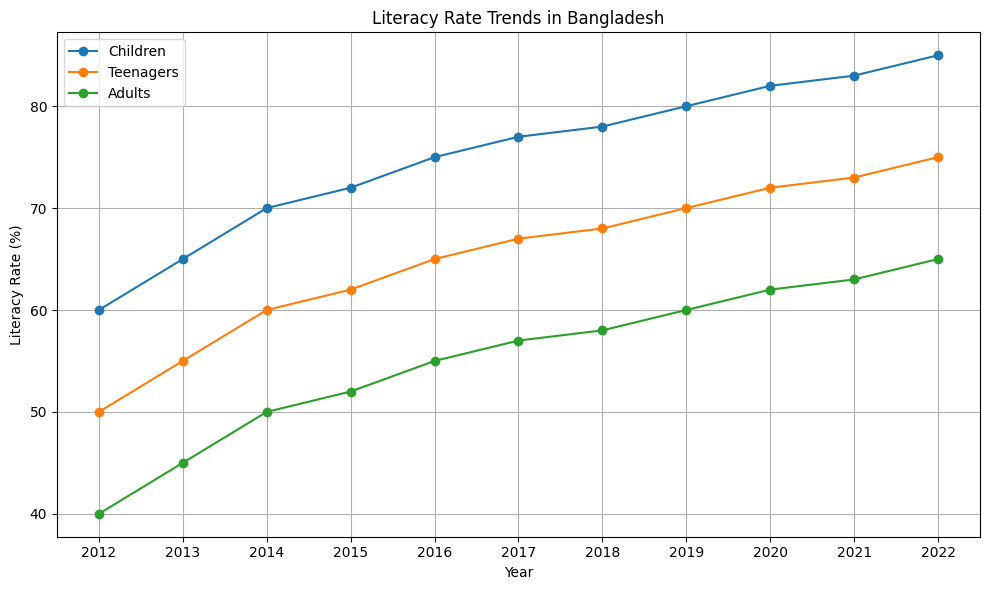Education is a cornerstone of development, and literacy rates serve as a crucial indicator of a nation’s progress in providing education to its population. In Bangladesh, like in many countries, literacy rates have seen significant changes over the years, reflecting both challenges and strides in educational accessibility and quality.

Overview of Literacy Rate Trends
Over the past decade, Bangladesh has witnessed notable improvements in literacy rates across different age groups. Let’s delve into these trends to understand how education has evolved:
Children and Teenagers:
- At the beginning of the decade, children’s literacy rates stood at around 60%, steadily increasing to reach 85% by the most recent data points. This growth highlights enhanced educational opportunities for younger demographics.
- Similarly, teenagers have also shown steady progress, with literacy rates climbing from 50% to 75% over the same period. This suggests improved access to primary and secondary education, critical for youth development.
Adult Population:
- For adults, literacy rates have shown a positive trajectory, rising from 40% to 65% over the past decade. This increase reflects efforts in adult education programs and initiatives aimed at enhancing lifelong learning opportunities.
Factors Contributing to Change
Several factors have contributed to these positive trends in literacy rates:
- Government Initiatives: Bangladesh has prioritized education as a fundamental right, leading to increased investments in infrastructure, teacher training, and curriculum development.
- Community Engagement: Local communities and NGOs have played pivotal roles in promoting literacy through grassroots efforts, adult education programs, and community libraries.
- Technological Advancements: The proliferation of digital learning tools and internet access has also played a significant role in expanding educational opportunities, especially in rural and underserved areas.
Challenges and Opportunities Ahead
While progress has been commendable, challenges remain:
- Gender Disparities: Disparities in literacy rates between genders persist, albeit narrowing. Efforts to ensure equal access to education for girls and women are crucial for sustainable development.
- Quality of Education: Ensuring quality education remains a challenge, with disparities in educational outcomes across regions and socioeconomic backgrounds needing continued attention.
Conclusion
The upward trajectory of literacy rates in Bangladesh reflects the country’s commitment to improving education for all. By addressing existing challenges and leveraging opportunities, Bangladesh is poised to further enhance literacy rates and equip its citizens with the skills and knowledge needed to thrive in the 21st century.
As we look towards the future, continued investments in education, innovative approaches, and inclusive policies will be key in shaping a brighter tomorrow for Bangladesh’s youth and its society as a whole.